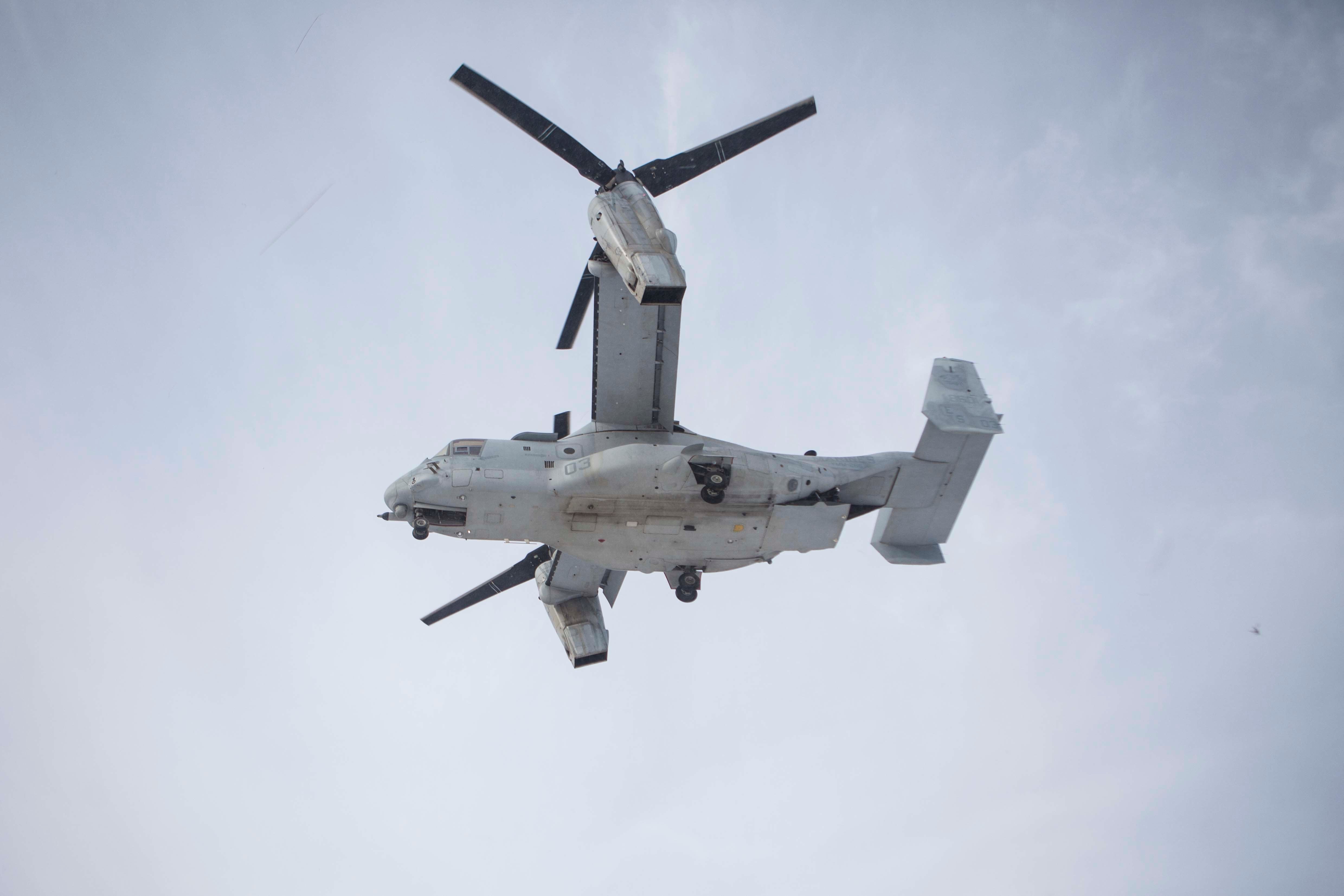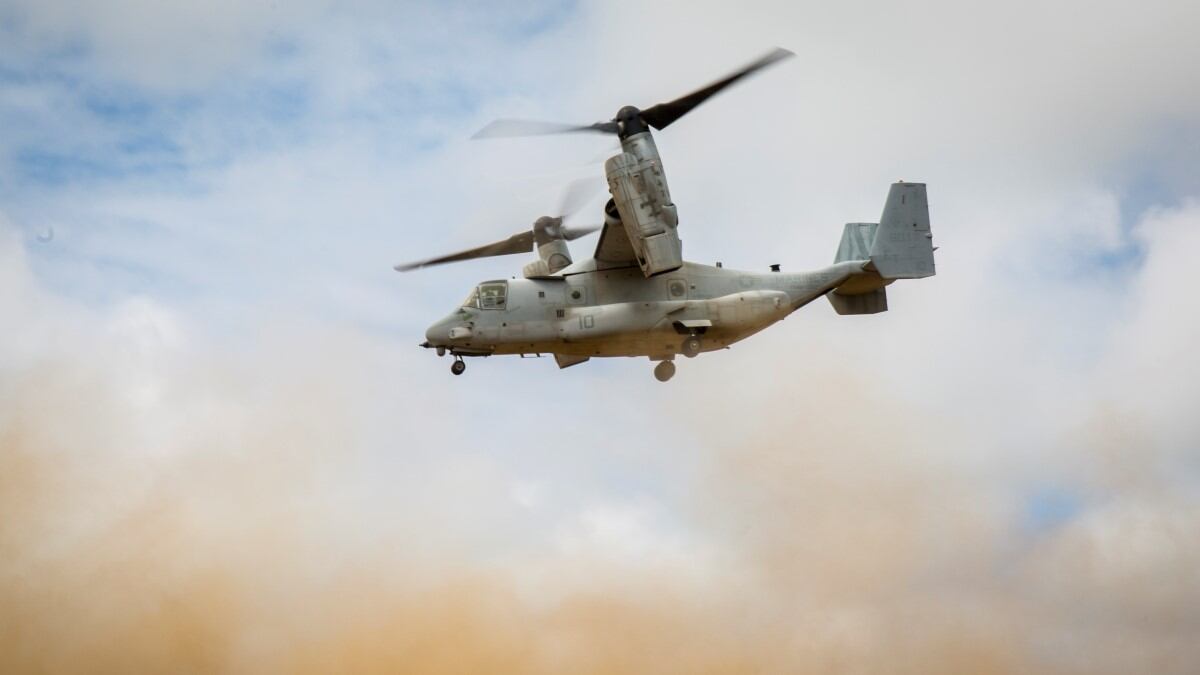A Marine was injured after a Marine Corps MV-22B Osprey experienced a hard landing during a training event in Nevada Oct. 24.
Four Marines were aboard the tiltrotor aircraft when it landed at approximately 10 p.m. at the Nevada Test and Training Range at Nellis Air Force Base in Las Vegas, Marine spokesman Capt. Johnathon Huizar said in an emailed statement to Marine Corps Times on Oct. 26.
One of the crew members went to a nearby hospital and was discharged in good condition, and there were no other injuries, Huizar said.
The Marine Corps is still assessing the damage to the aircraft, according to Huizar.
But the Naval Safety Command characterized the mishap as Class A. In mishaps where no one died or received a permanent disability, the Class A designation means an aircraft sustained at least $2.5 million in damage.
RELATED

“The incident is under investigation, Huizar said. “Initial assessments indicate the incident was likely not mechanical in nature.”
In June 2022, a mechanical issue known as a hard clutch engagement downed an Osprey in California, killing all five Marines aboard. The problem prompted the V-22 Joint Program Office in February to ground an unspecified number of Ospreys to replace aging clutch parts, and the office said in July it had decreased the risk of a hard clutch engagement by 99%.
In August, three Marines were killed when an Osprey crashed north of Darwin, Australia. The Marine Corps hasn’t yet released a determination of what caused that crash.
The Osprey involved in the mishap Oct. 24 is part of Marine Aviation Weapons and Tactics Squadron One and was participating in the Weapons and Tactics Instructor course, according to Huizar.
That seven-week course prepares experienced aviators to become combat training experts for the fleet. In 2015, the cost to graduate one certified instructor from the course was $200,000, approximately the cost of four years of tuition at an Ivy League university, according to a Marine Corps news release.
Michael F. Canders, a Navy and Air Force veteran who now is the director of Farmingdale State College’s Aviation Center in East Farmingdale, New York, said hard landings occur when an aircraft touches down at a higher than normal rate of descent.
“They’re not very common,” said Canders, a helicopter pilot.
But they do happen, and military aircraft are designed to be able to accept a certain level of hard landings, he said.
In the past five years, Marine Corps Ospreys have experienced “one potential hard landing which is still under investigation and one 2021 mishap which fits the hard landing category,” Jeffrey Jones, a spokesman for Naval Safety Command, told Marine Corps Times. The potential hard landing is the Oct. 24 mishap, according to Jones.
In 2017, a Marine Corps Osprey made a hard landing in Syria, injuring two service members. A hard landing by the aircraft in 2015 in Hawaii killed two Marines and injured 20 more, a mishap the Corps later attributed to decisions made by the pilots in brownout conditions.
In 2013, Marines escaped with no injuries from an Osprey after a hard landing in Nevada. The aircraft later caught on fire.
Irene Loewenson is a staff reporter for Marine Corps Times. She joined Military Times as an editorial fellow in August 2022. She is a graduate of Williams College, where she was the editor-in-chief of the student newspaper.





